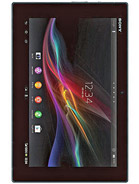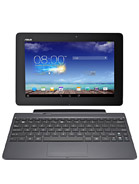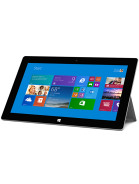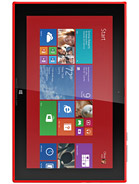Apple iPad Air review: Sun and heir
Sun and heir
Final words
Last year saw two 9.7" iPads announced, but the difference between them was insignificant - the iPad 4 only drew people who were late to buy the iPad 3. The Apple iPad Air (the fifth model in the line) is a major upgrade over the previous models.
It's the first iPad to change the design (aside from the varying thickness, which was really more a function of the battery capacity) and while we think Apple could have shaved off a few more millimeters of the side bezels, the Air is easier to hold in hand. Not quite there for single-handed use, but still a worthwhile update. Especially when you consider the thickness, both the iPad 3 and 4 were fairly chunky.
The screen is an improvement even if the most commonly quoted specs - size and resolution - haven't changed. The chipset has improved as well, even though once again the usual specs (core count and frequency) remain the same. This is why Apple doesn't like quoting specs - they may appear the same to the layman, while delivering big jumps in user experience.
And user experience is where the iPad rules. Android may have muscled past the iPhone with specs and features, but manufacturers still can't get the tablet experience on Android right. We still think Apple should loosen things up more - other than stuff like split-screen UI here and there, the iPad interface feels like a blown up iPhone. And there are plenty of opportunities to revamp the interface when you move from 4" to 9.7".
As far as viable competition goes, the iPad mini 2 is official though not yet on sale (and Apple is evasive about a specific launch date). It has a 7.9" screen with the same resolution as the Air, uses the same chipset, has the same storage options and so on. The only difference is it's a lot more compact - it's easy to use in one hand and slips right into a coat pocket.
Androids may not have nailed the UX yet, but the manufacturers try to add unique features that just might draw you away from the iPad.
The Samsung Galaxy Note 10.1 (2014 edition) features a bigger S Pen and a pressure-sensitive digitizer so artists and creative types can quickly and accurately sketch their ideas on it (be it in words or graphics). The tablet also comes with a choice of powerful chipsets (Snapdragon 800 or Exynos 5420) and a screen that's sharper than the iPad's Retina display.
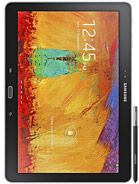
Samsung Galaxy Note 10.1 (2014 Edition)
The Sony Xperia Tablet Z has a stunningly thin 6.9mm body and it's a looker too with a distinct glass-and-metal Xperia design. Even better, it's water resistant so you don't have to worry about it too much in the kitchen or near the pool. The chipset is from 2012, though the real-world difference between it and the latest chips is hard to spot most of the time.
Asus went in another direction - its Transformer Pad TF701T is the latest in the series of Android-powered hybrids. The form factor is becoming popular with Windows 8 - an ultrabook with a detachable screen that turns into a tablet - and is fairly unique in Android land. Sure, there are third-party keyboards for the iPad, but they don't work as well as the bespoke solution, which also brings a touchpad and extra battery. The Transformer Pad TF701T has a 10.1" 299ppi screen similar to that of the Note 10.1 Keep in mind that the iPhone 5s screen has 326ppi and you hold it much closer to your eyes.
Having mentioned Windows 8, the Windows 8.1 RT OS is a strong alternative too - its UI was meant to work on desktop computers and laptops too, unlike the phone-centric Android and iOS. App selection isn't as rich as the app stores of those two or the vast Windows x86 library, but it's growing and you get a proper desktop when you hook up a mouse and a keyboard.
Microsoft's own Surface 2 tablet comes with a cool magnesium build that rivals iPad's aluminum body and has a built-in kickstand (with two positions to boot). Also, there is a selection of keyboards - very thin ones (we're talking 2.75mm here), ones with proper keys (also thin enough at 5.4mm) and ones with an extra battery.
Nokia also has a Windows 8.1 RT tablet that's similar to the Surface 2. It uses a Snapdragon 800 chipset instead of Tegra 4 and it's made of polycarbonate (it's a bit more compact and a bit lighter), but it has a kickstand and its own battery-packing keyboard.
Let's be honest - the majority of iPad owners are itching to upgrade to the latest iPad, not an Android tablet or a keyboardless Windows laptop. Even more so, if they skipped number 4 in the line. The truth is that the iPad mini 2 is the real threat to the iPad Air - it's just as powerful, with a screen that's even better (though smaller) and is more compact. Pundits can see the Retina-flaunting mini outselling the Air 2:1, but it may as well be a bold prediction to make. The full-sized iPad Air will make it sweat for sure. Whatever the result, Apple looks ready to bag another win.
Reader comments
- Roblox Gameplay
- 20 Apr 2023
- 7k3
Hi I'm Using iPad Air for many years it pubg and free fire but sometimes it crashes so dont download high data games but for Roblox it support for some particular games. Thank you,
- Anonymous
- 16 Oct 2020
- S1U
Support aim or not
- aung
- 01 May 2017
- 6p$
can use sim

